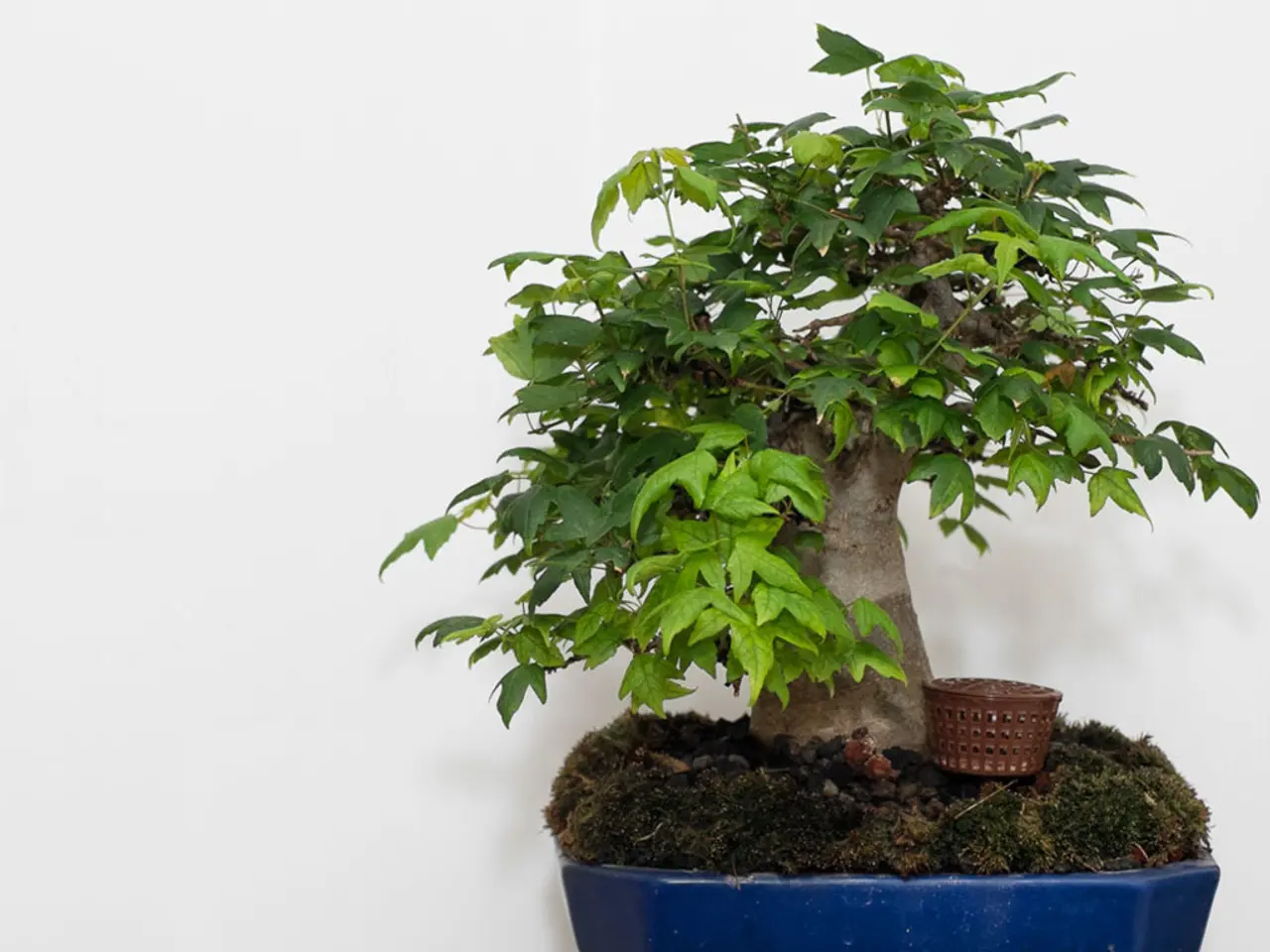Transformed Title: Grasping the Organic Elegance and Harmony in Casual Bonsai (Moyogi)
In the captivating world of bonsai, the Moyogi style stands out for its unique and authentic compositions. By highlighting the tree's distinctive trunk shapes, intriguing branch patterns, leaf shapes and colours, and natural imperfections, artists create compelling bonsai masterpieces that showcase the inherent beauty of these miniature trees.
The Moyogi style is not just about visually appealing trees; it's about movement and flow. Skillfully manipulating the trunk and branches allows artists to create a sense of movement within the composition, giving it a dynamic and harmonious feel.
As the seasons change, so does the care and maintenance of your Informal Upright Bonsai. Autumn requires reduced watering and fertilization, allowing the tree to prepare for dormancy. During winter months, reduce watering to once every 4-6 weeks.
The process of shaping begins after the ideal branch structure is envisioned. Frequent pruning harmonizes the growth of the bonsai, directing energy towards desired shapes and sizes, rather than stunting it. Strategic pruning eliminates unnecessary branches, allowing the tree's inherent beauty to shine and redirecting energy towards remaining growth.
In spring, focus on pruning and fertilizing to encourage new growth. Summer requires attention to pest management and hydration. Adapting care and maintenance strategies to the changing seasons is crucial for the long-term health and vigor of the tree.
While traditional Moyogi species include Japanese Black Pine, Juniper, and Maple, many other species, such as Elm, Ficus, and Azalea, can also be trained using Moyogi techniques. Some species can tolerate low-light conditions for indoor growth, but careful species selection and adapted care are necessary.
The Moyogi style employs several wiring techniques to create gentle curves and twists, including wrap and bend, tapered wiring, layered wiring, and hidden wiring. Artists must carefully balance tension and relaxation in the wiring to achieve a sense of gentle, organic movement.
Thoughtful pruning back of vigorous branches and promotion of backbudding refines the bonsai's natural, asymmetrical shape and reveals its unique character. Moyogi techniques can be applied to a broader range of tree species, including deciduous and flowering varieties.
In winter, focus on structural pruning and wiring, taking advantage of the tree's dormant state to refine its shape and structure. By skillfully manipulating the trunk and branches, artists can create movement and flow within the Moyogi composition, further refining and elevating the aesthetic appeal of your Informal Upright Bonsai.
Read also:
- Budget cuts at federal and state levels jeopardize advancements in fighting HIV and AIDS within Dallas County
- Strategies for Maintaining and Boosting Physical Activity as You Grow Older
- Understanding Prediabetes: A Precursory Condition to Diabetes
- Strategies for Strengthening a Nigerian Infant's Immune System




